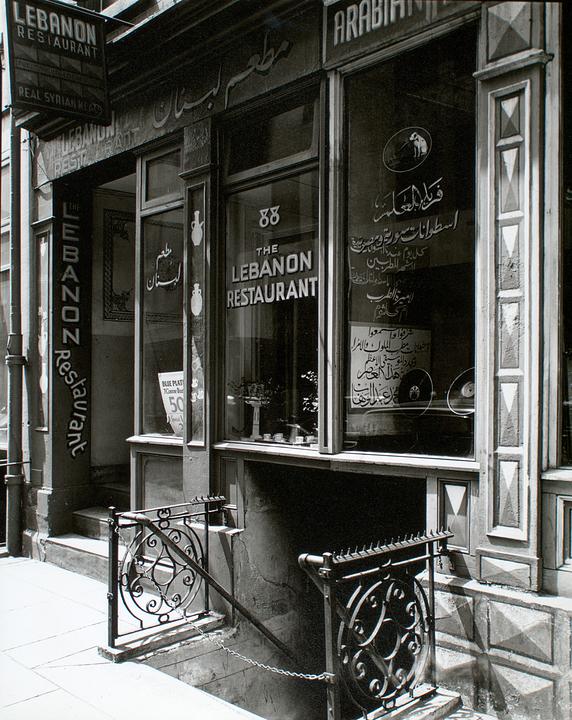Record label of Alexander Maloof's song, "Lebanon," ca. 1924. Courtesy Richard Breaux.
Arts and Culture
From the first, poetry was a living, breathing thing in the Syrian diaspora. At every wedding and baptism, not to mention parties and meetings, people would stand and recite poetry, either taken from the canon, or composed by the speaker for the occasion. Poetry regularly appeared in the colony's newspapers, and writers who would later become famous, like Kahlil Gibran, Ameen Rihani, and Ilya abu Madi, were first published there.
The first Arabic newspaper in North America appeared in New York on April 15th, 1892. Kawkab America (Star of America) was the brainchild of Abraham Arbeely, eldest son of the first Syrian immigrant family, and his brother, Nageeb. The newspaper was seen as a way to connect members of the diaspora to each other and to those at home.
A half-dozen other newspapers came out in the nineteenth century, some more long- lasting than others. They and the half-dozen Arabic books that were published, though instructive rather than literary, set the stage for the great literary flowering of the twentieth century that is the subject of the art installation in Elizabeth H. Berger Plaza called al Qalam (the Pen).
The most famous of the literary associations was Al Rabitah al Qalamiyah, the Pen Bond, that was founded in 1916 and re-founded in 1920. Out of it came books of poems, novels, and arts magazines in Arabic and English that exerted a profound influence on contemporary Arabic and American literature.
Social gatherings in the early days often included music provided by Syrians who had brought instruments with them from home. Soon, though, the community boasted professional musicians, composers, and record producers who performed and sold to the American as well as Syrian public. Alexander Maloof taught, wrote music, had his own record company, and owned a music store on Washington Street as did Abraham Macksoud. Anis Fuleihan made his piano debut in New York in 1919.
The first Arabic newspaper in North America appeared in New York on April 15th, 1892. Kawkab America (Star of America) was the brainchild of Abraham Arbeely, eldest son of the first Syrian immigrant family, and his brother, Nageeb. The newspaper was seen as a way to connect members of the diaspora to each other and to those at home.
A half-dozen other newspapers came out in the nineteenth century, some more long- lasting than others. They and the half-dozen Arabic books that were published, though instructive rather than literary, set the stage for the great literary flowering of the twentieth century that is the subject of the art installation in Elizabeth H. Berger Plaza called al Qalam (the Pen).
The most famous of the literary associations was Al Rabitah al Qalamiyah, the Pen Bond, that was founded in 1916 and re-founded in 1920. Out of it came books of poems, novels, and arts magazines in Arabic and English that exerted a profound influence on contemporary Arabic and American literature.
Social gatherings in the early days often included music provided by Syrians who had brought instruments with them from home. Soon, though, the community boasted professional musicians, composers, and record producers who performed and sold to the American as well as Syrian public. Alexander Maloof taught, wrote music, had his own record company, and owned a music store on Washington Street as did Abraham Macksoud. Anis Fuleihan made his piano debut in New York in 1919.
Featured
Get started with these points of interest










